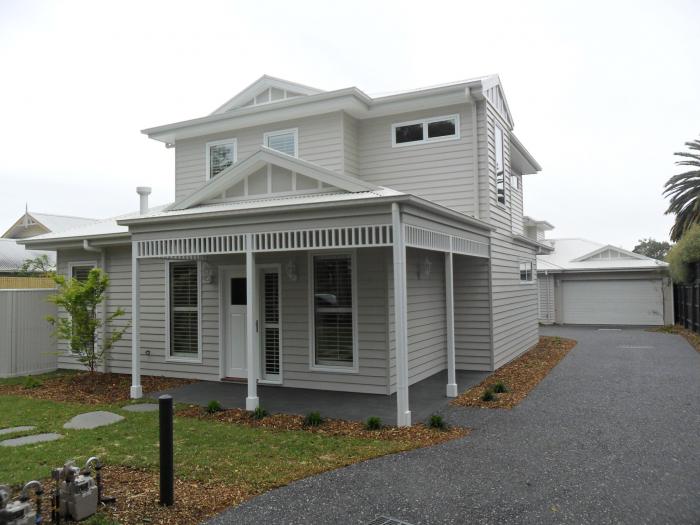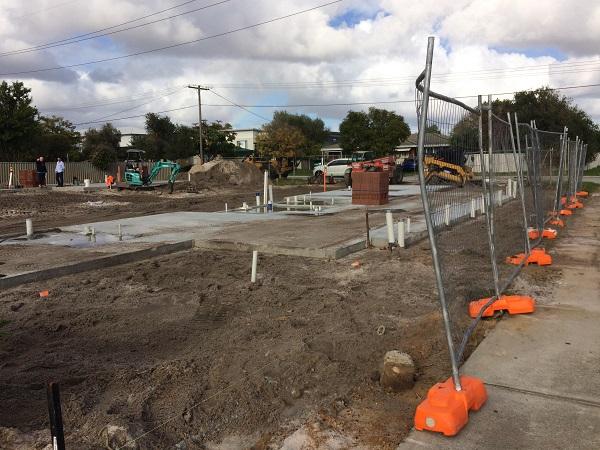The subdivision potential of a parent lot of land in most Australian states is generally determined by three main factors. These are:
- If the land has the correct ‘zoning’ to be subdivided
- If the land can meet state planning policies and criteria and;
- If the land also can meet any specific provisions for residential infill development in the local councils Local Planning policies (LPP’s)
The specific requirements of your local council and how they interpret their policies are an important project feasibility consideration for any subdivision project. This will often require diligent research and some professional advice.
NSW
One of the key planning factors to be considered when looking to subdivide land is the zoning of the land and then site-specific restrictions. In NSW, the Local Environmental Plan (LEP) prescribes whether land within a particular zone can be subdivided. If the zone allows subdivision, the LEP will set out minimum lot size standards for subdivision. The prescribed Minimum Lot Size specify the minimum size that an existing lot must meet in order to be subdivided, as well as the minimum size for newly created lots.
Site-specific restrictions to consider include topography, bushfire prone status, flood prone status, ecological constraints, contaminated land constraints, if it has heritage status and others. These restrictions can prevent a site from being subdivided or can affect the lot design and the manner in which a subdivision takes place, even if the zoning and LEP controls allow.
The most certain way of knowing Council’s planning controls for a site is by requesting a certificate called a Section 149 (or Planning) Certificate.
If the lot does not meet the Minimum Lot Size standard, the NSW planning system provides flexibility in planning controls by providing the ability for a council to vary development standards in certain circumstances. This requires a developer to make a written application to vary a development standard under Clause 4.6 of an environmental planning instrument when they lodge their development application. It must demonstrate that compliance with that development standard is unreasonable or unnecessary in the circumstances of the case.
However, there are some restrictions where clause 4.6 cannot be enacted and it is advised that you engage a professional planning consultant to apply variations to you subdivision application.
Victoria
Urban infill subdivisions are usually achieved through a design process that analyses site opportunities and constraints, and develops a plan for new dwellings that accords with planning controls of the state government and local municipal councils. To answer the question of can I subdivide my property, you will need to consider the statutory requirements of the municipal council in which the parent lot exists. Such controls will typically seek to provide for new housing to ‘fit in’ with the character of existing suburbs or to create a new preferred character. You will also need to check the title for any restrictive covenants – single dwelling covenants are common in numerous areas in metropolitan Melbourne. The subdivision of land will usually follow the development of a multi-dwelling lot development. Straight land subdivision is possible and often a subdivision of land only (i.e. prior to the construction of a dwelling) will be tied to a well-defined built form, typically through a legal agreement registered on the land title. One of the most common forms of urban infill is a dual-occupancy, where a second house is built in what used to be a typical large single allotment originally subdivided prior to around 1980.
Opportunities for urban infill developments and subdivisions are dependent on a range of complex factors controlled by planning scheme zones, overlay controls and policies. These can cover issues such as density, height, tree retention and urban character. Information on planning controls for individual properties is readily available through Planning Maps Online and is the starting point for a feasibility assessment. Importantly, the overarching state government policy for Melbourne, articulated in Plan Melbourne 2017-50, predicts that Melbourne’s population will increase from around five million to eight million people by 2050, which will require an additional 1.6 million dwellings to house the extra population.

Dual occupancy in Croydon, Victoria
WA
As a rule of thumb, development potential when subdividing land in Western Australia is determined by the planned subdivisions’ ability to:
- Meet the minimum and average lot sizes for zoning in the relevant Local Councils ‘Scheme Map’.
- Meet specifications of the Residential Design Codes, which stipulate things like access provisions, boundary setbacks and street frontage minimums to be met in addition to the lot sizing. The orientation and positioning of any retained dwellings can also impact subdivision potential.
- Cost effectively meet local council and utility provider conditions, which may include contributions for water, sewerage, power, drainage and public open space, and upgrades to any old retained dwellings to make them R-code compliant.

Subdivision property under construction in WA
Queensland
The first thing to consider when it comes to the subdivision of land in Queensland is to consult the requirements of local planning schemes. Queensland planning schemes specify minimum lot sizes, minimum frontage and other requirements for new lots, which vary according to the zoning of your property. Most council areas in Queensland provide interactive mapping tools, which allow you to view your property on a map to find the relevant zones, overlays and neighbourhood plans that apply to your site.
The zoning and existing lot size largely determines whether a site can be subdivided. However, there are a number of other potential issues/constraints that can impact the development potential of a site including (but not limited to):
- Council overlays (i.e. bushfire hazard, flooding, biodiversity, heritage/character protection, steep slopes etc);
- Significant/protected trees (both on the site and council street trees);
- Driveway requirements and crossover issues (arterial road access, location of existing electricity poles, bus stops etc);
- Location of existing infrastructure (e.g. water, hydrants, sewer, electricity, stormwater etc). The location of stormwater and sewer are particularly important, as each lot is required to achieve a ‘lawful point of discharge’ via gravity

Kenmore Subdivision in Qld.
Any of the above issues/constraints have the ability to impact the development potential of a site or costs associated with the subdivision. Expert advice should be obtained from an experienced consultant prior to purchasing a new property to identify any potential issues that may impact your site being subdivided.
For all general subdivision enquiries and assistance getting your project underway, contact the respective professional in your state for some expert advice today.
Western Australia
FLYNN Subdivision Experts
Markus ph. 0403984155
[email protected]
Queensland
AAD Studio
Liam ph. 07 3368 2211
[email protected]
Victoria
Millar|Merrigan
Duncan ph. 03 8720 9500
[email protected]
New South Wales
Suburban Town Planners
Melissa Neighbour ph. 0499224064
[email protected]